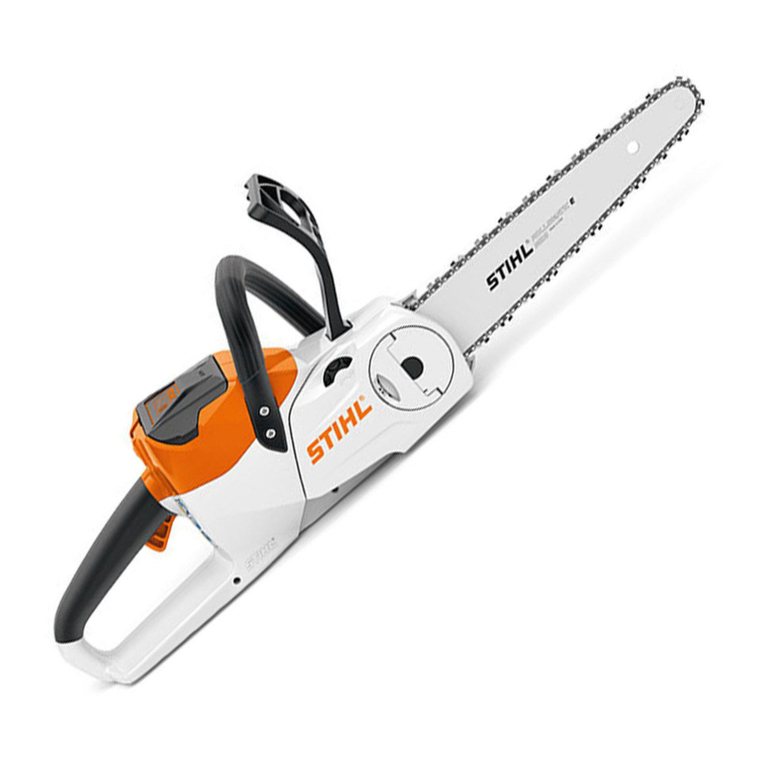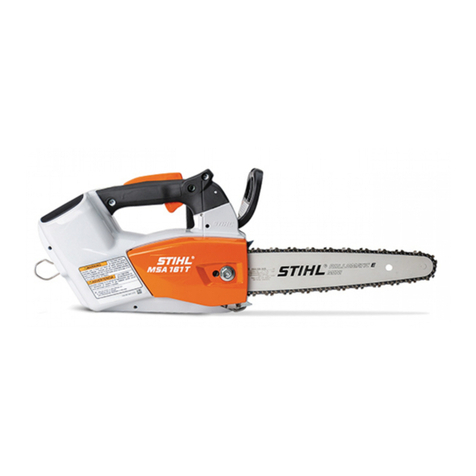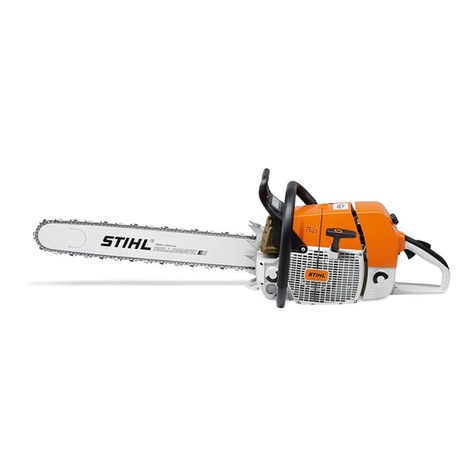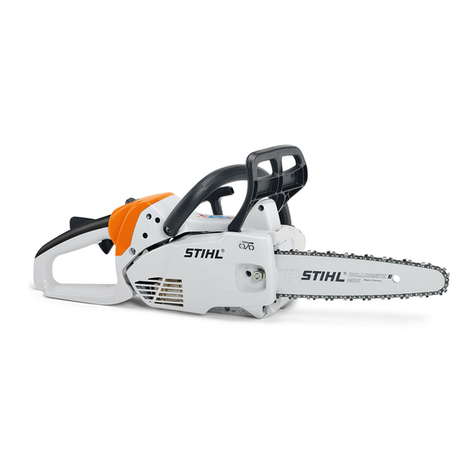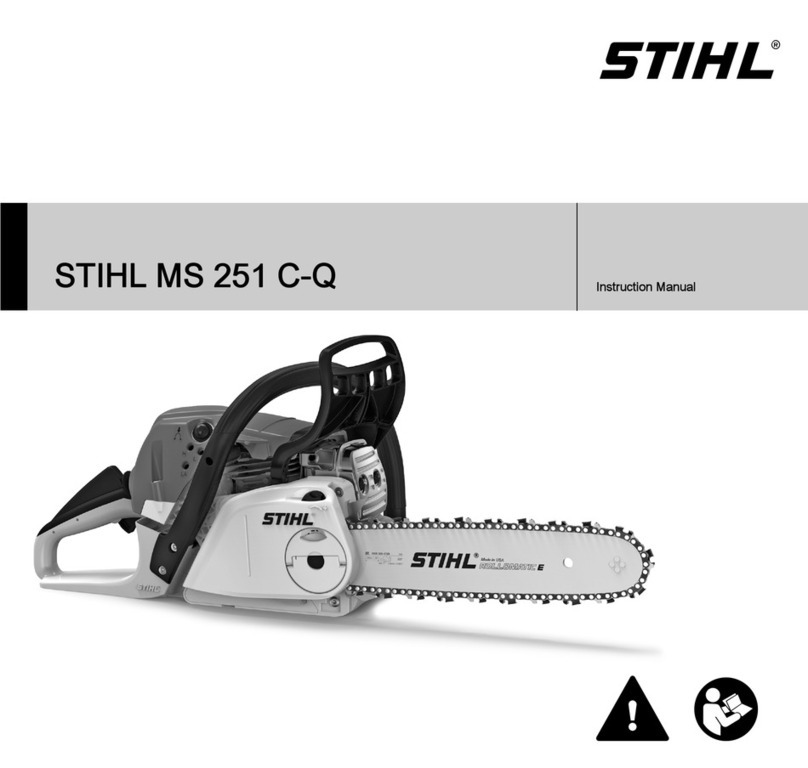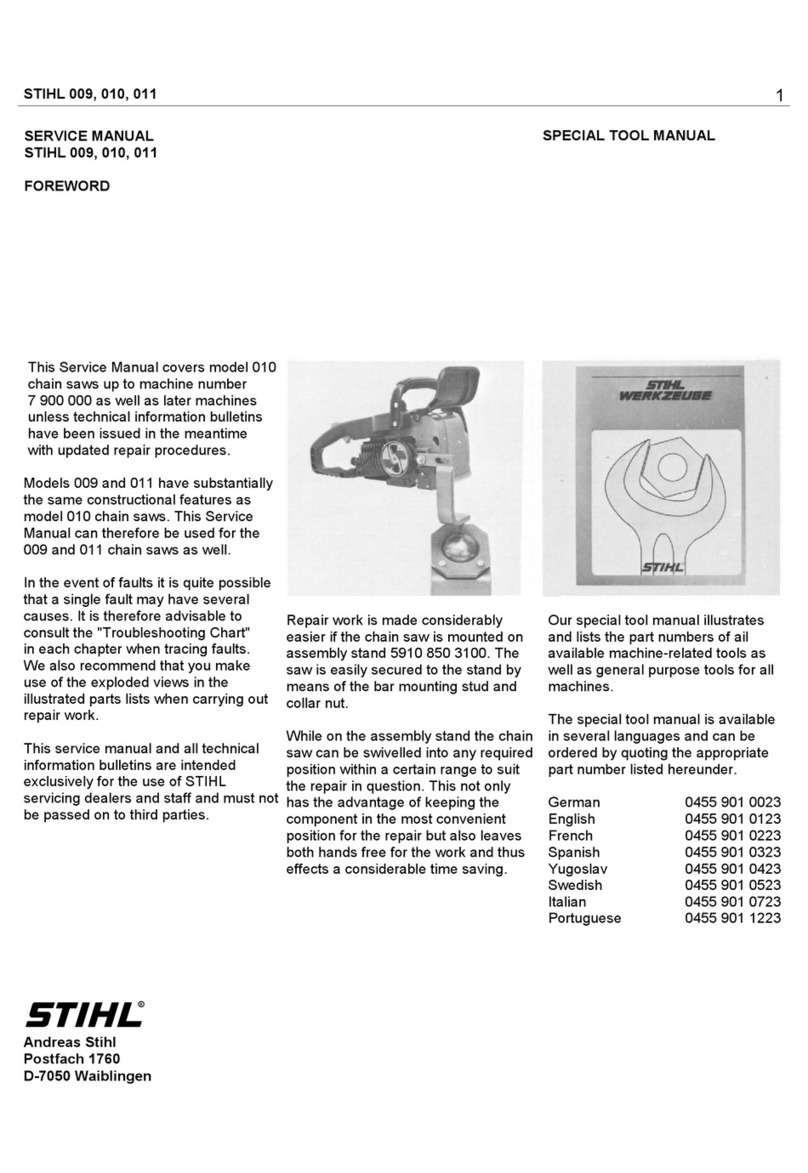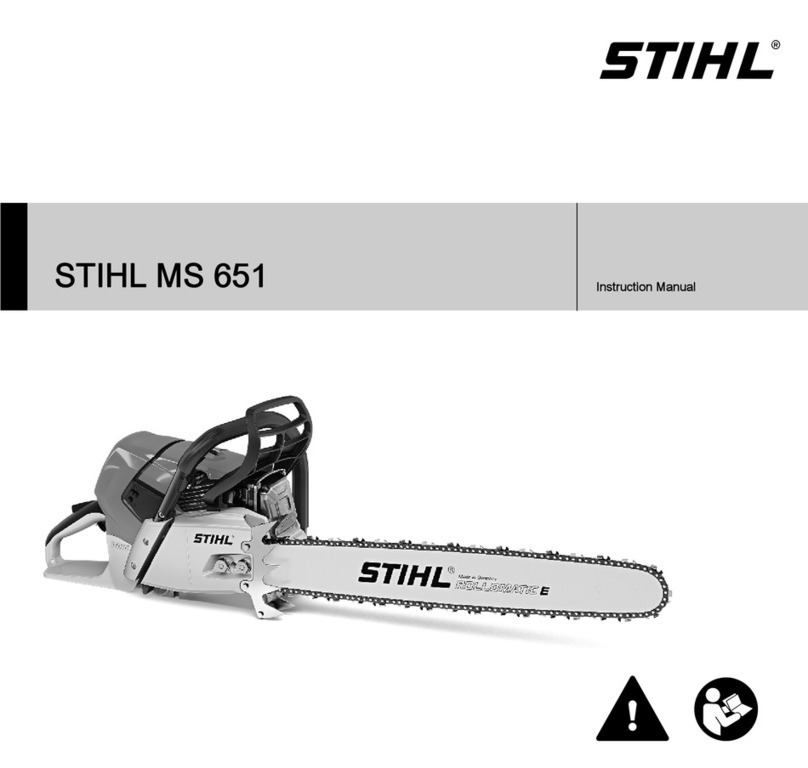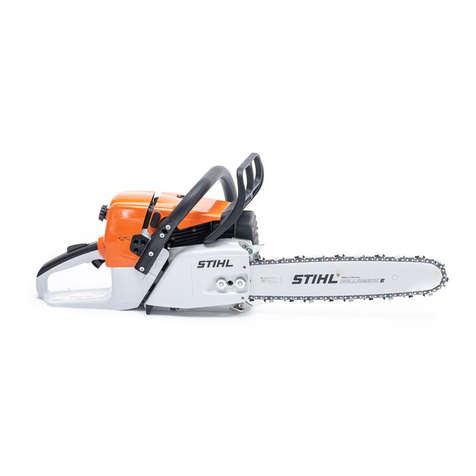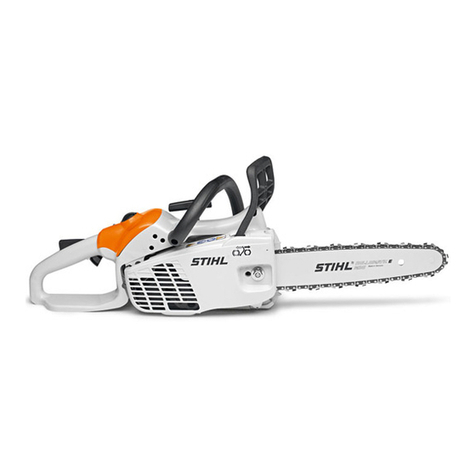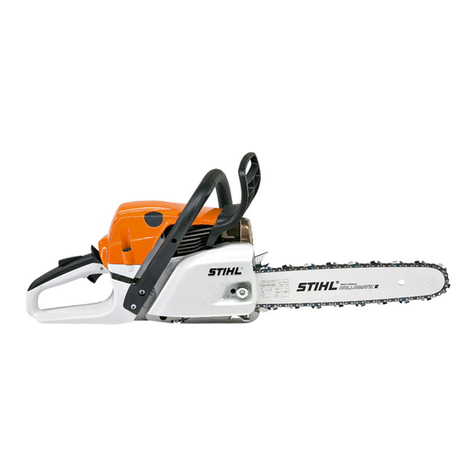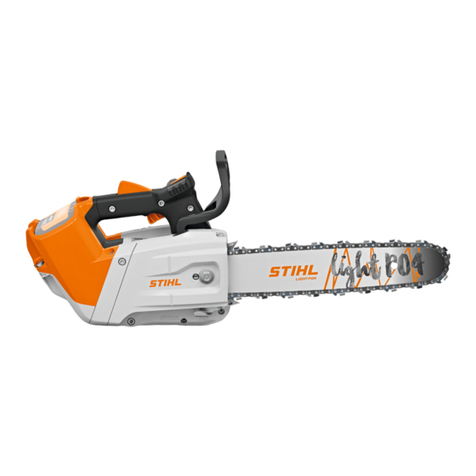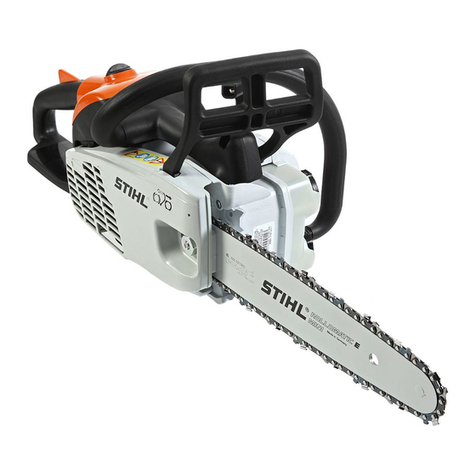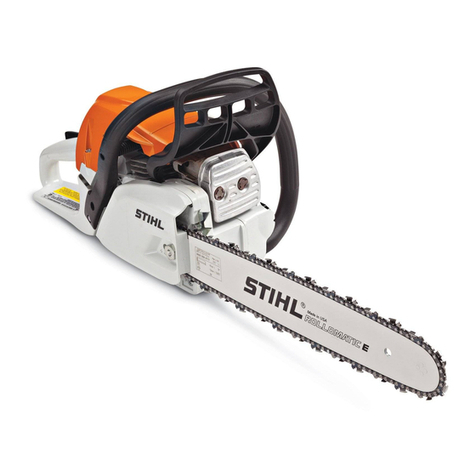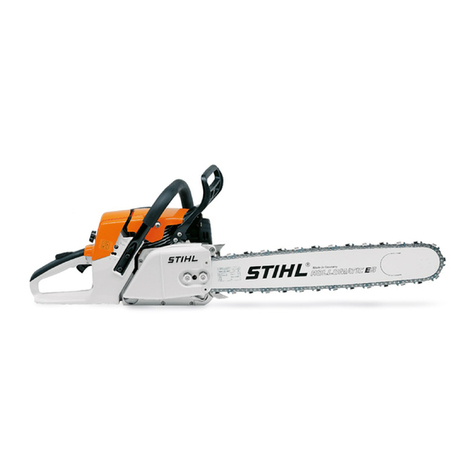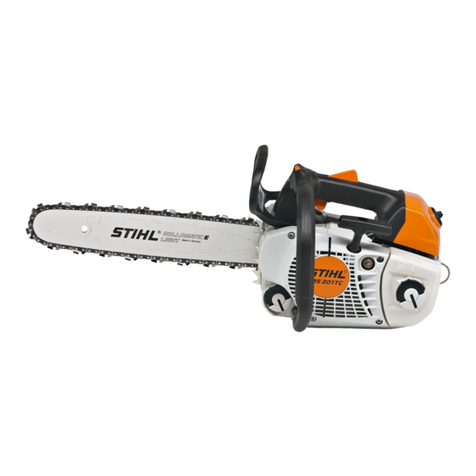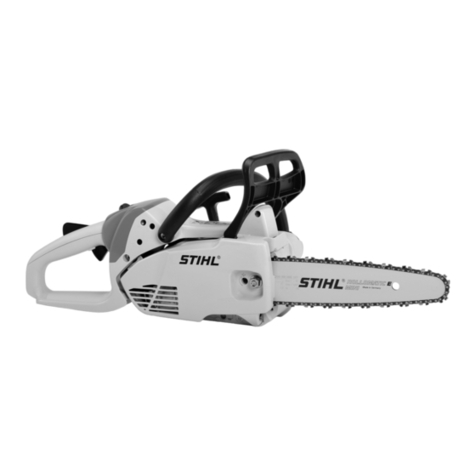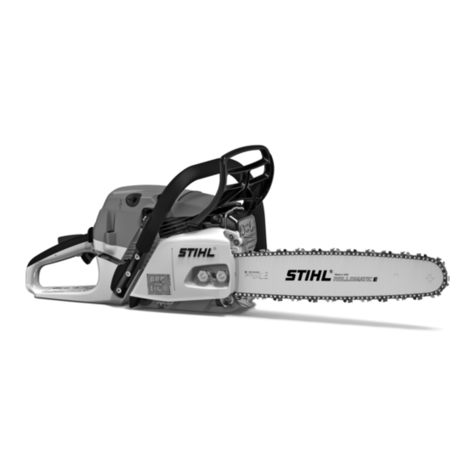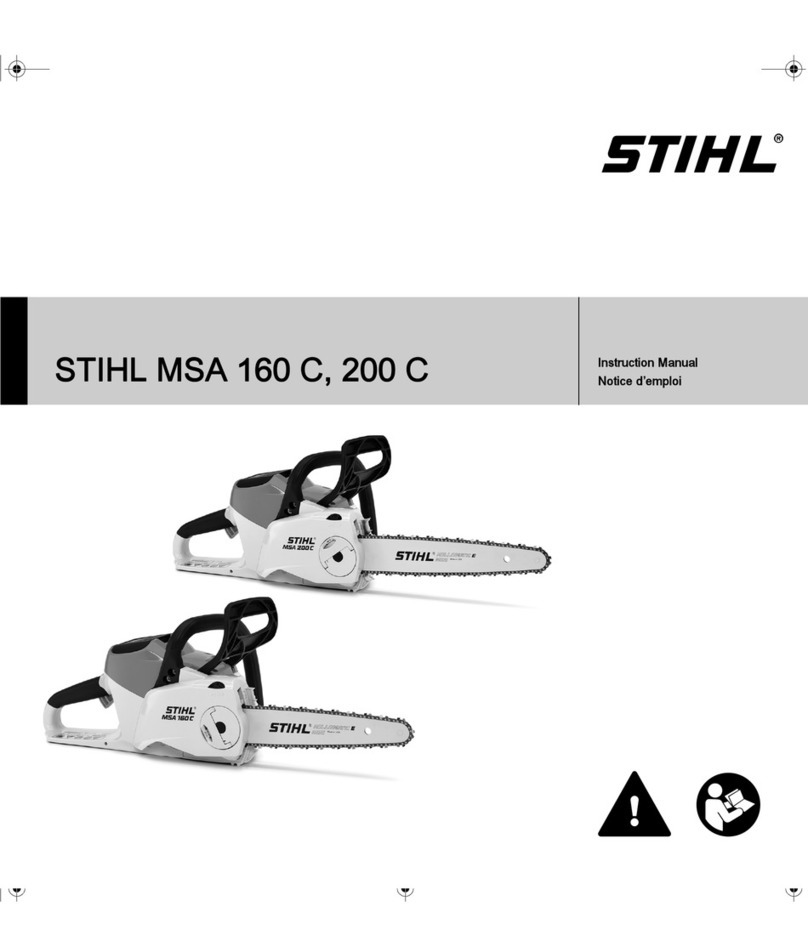
Important Safety Precautions
for Chain Saw Users
A. Kickback Safety Precautions
Warning!
Kickbackmay occurwhen the nose ortip ofthe guide
bar touches an object, orwhen thewood closes in and
pinches the saw chain in the cut. Tip contact in some
cases may cause a lightning fast reverse reaction,
kicking the guide bar up and back towards the
operator. Pinching the saw chain along the top of the
guide bar may push the guide bar rapidly back to-
wards the operator. Either of these reactions may
cause you to lose control of the saw which could re-
sult in serious personal injury.
Section 4.12 of ANSI B 175.1-1985 sets certain perfor-
mance and design criteria related to chain saw kick-
back. STIHL has developed a color code system using
green and yellow to help you select a powerhead, bar
and chain combination thatcomplies with the kickback
requirements ofthe ANSI Standard. See the sections
entitled "Safety Precautions" and "Specifications" of
this Manual.
Do not rely exclusively upon the safety devices built
into your saw. As a chain saw user, you should take
several steps to keep your cutting jobs free from acci-
dentor injury.
1. With a basic understanding of kickback, you can
reduce or eliminate the element of surprise. Sud-
den surprise contributes to accidents.
Keep a good firm grip on the saw with both hands,
the right hand on the rear handle, and the left hand
on the front handle, when the engine is running.
Use a firm grip with thumbs and fingers encircling
the chain saw handles. A firm grip will help you re-
duce kickback and maintain control of the saw.
Don't let go.
Make sure that area in which you are cutting is free
from obstructions. Do not let the nose of the guide
bar contact a log, branch, or any other obstruction
which could be hit while you are operating the saw.
Cut at high engine speeds.
Do not overreach or cut above shoulder height.
Follow manufacturer's sharpening and mainten-
ance instructions for the saw chain.
Only use replacement bars and chains specified
by the manufacturer or the equivalent.
B. Other Safety Precautions
Do not operate a chain saw when you are fatigued.
Use safety footwear; snug-fitting clothing; protec-
tive gloves; and eye, hearing, and head protection
devices.
Use caution when handling fuel. Move the chain
saw at least 10 feet (3 m) from the fueling point
before starting the engine.
continued on the back inside cover
